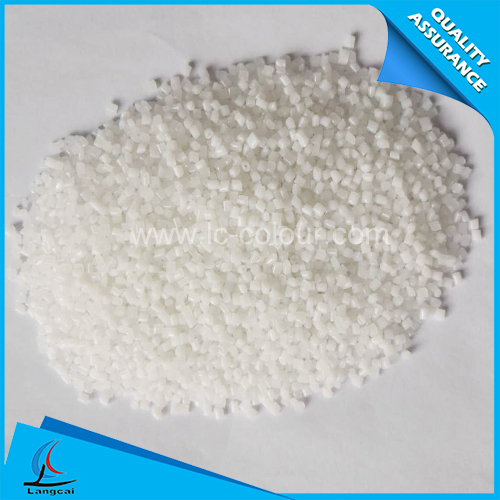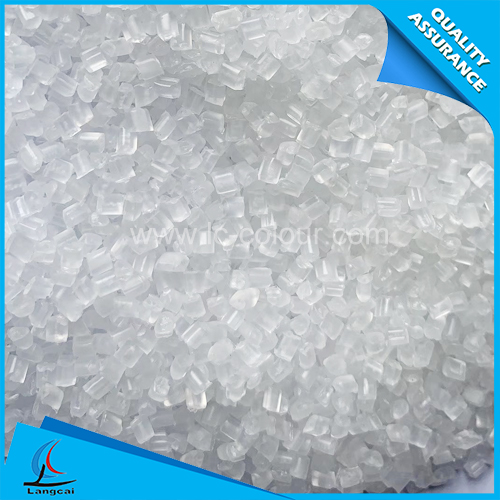- Nonwoven Fabrics
- Tailor Made Masterbatch
- Plastic Masterbatch
- Chemical Fiber Masterbatch
- Functional Masterbatch
- Machinery
- Spunbond PP Nonwoven Masterbatch
- Mono Color Masterbatch
- Liquid Color Masterbatch
- Non-woven Masterbatch
- Polyester Fiber Masterbatch
- Nylon Fiber Masterbatch
- Polypropylene Fiber Masterbatch
- Lab Nonwoven Machine
- Lab BCF Machine
- Dryer
- Filler Masterbatch
- The 2025 International Textile Innovation Conference will be held in Keqiao, Shaoxing on November 5th
- Unveiling the core components of Mono Color Masterbatches!
- Why choose Mono Color Masterbatches? The four core advantages are irreplaceable
- The adjustment of the global industrial chain has forced the upgrading of the risk prevention and control model
- What is a Complex masterbatch? What are the outstanding advantages?
- With weak US cotton and increased domestic supply, can the upward trend continue in the future?
- Phone:00836 - +86-535-8484358
- Email:wendy@ytlc-colour.com
- Address:DALAN INDUSTRIAL PARK, ZHANGXING TOWN, ZHAOYUAN CITY, SHANDONG, CHINA
According to statistics, the total energy consumption of the textile industry in 2019 reached 107 million tons of standard coal, accounting for 4.0% of the manufacturing industry; among the 31 categories of manufacturing subdivisions, the energy consumption of the textile industry ranked sixth. In order to implement my country's strategic goals of carbon peaking and carbon neutrality, speed up the technological innovation and low-carbon transformation of the textile industry, and provide Chinese solutions for the development of the global textile industry, the Chinese Academy of Engineering has established the "Textile Industry Dual-Carbon Development Strategy and Technical Route". Figure" key research consulting project.
On June 15, the kick-off meeting of the Chinese Academy of Engineering's consulting project "Double-Carbon Development Strategy and Technology Roadmap for Textile Industry" was held in a combination of online and offline methods. The meeting set up two venues in Beijing and Shanghai. Cao Xuejun, first-level inspector of the Consumer Goods Industry Department of the Ministry of Industry and Information Technology, Li Lingshen, Vice President of China National Textile and Apparel Council, Tang Haiying, Deputy Director of the Environmental and Textile Engineering Department of the Chinese Academy of Engineering, Sun Jinliang, Jiang Shicheng, Chen Wenxing, Xu Weilin, Xu Zuxin, academicians of the Chinese Academy of Engineering, Xiong Huawen, director of the Energy Environment and Climate Change Research Center of the Energy Research Institute of the National Development and Reform Commission, and more than 50 experts from industry associations and colleges and universities attended the meeting. The meeting was chaired by Yu Jianyong, an academician of the Chinese Academy of Engineering.
Academician Yu Jianyong, the leader of the project team, introduced the overall situation of the project. He said that achieving carbon peaking and carbon neutrality is an inevitable choice for my country to focus on solving outstanding resource and environmental constraints and achieve sustainable development of the Chinese nation. The inevitable choice for the sustainable development of the industry in the future. The "Double-Carbon Development Strategy and Technology Roadmap for Textile Industry" established by the Chinese Academy of Engineering is a key research and consulting project of the Faculty. The project will form a low-carbon development technology roadmap for the textile industry through research on the current status of carbon emissions in my country's textile industry, emission reduction technologies in key links of the industrial chain, carbon emission coefficients of textile raw materials, and carbon emission benefits of recycling waste materials. Policy measures and suggestions for industrial low-carbon transformation and development. Through consulting and research, it will provide strong support for the low carbonization of my country's textile production equipment, the low carbonization of processing routes, the low carbonization and recycling of textile raw materials, and the green, low-carbon and sustainable development of the textile industry.
The four research groups of the project (general group, chemical fiber manufacturing group, textile industry group, clothing and apparel industry, and carbon footprint group) reported the ideas, content framework, research plan, expected goals, and research work arrangement of the project consulting research respectively.
Zhang Chuanxiong, deputy director of the Textile Industry Science and Technology Development Center, introduced the research background, main content and objectives of the project, research ideas and methods, organization management and schedule. Lv Jiabin, Vice President of China Chemical Fiber Industry Association, Chen Zhihua, President of China Printing and Dyeing Industry Association, Li Guimei, President of China Industrial Textiles Industry Association, Dong Kuiyong, President of China Cotton Textile Industry Association, and Yan Yan, Director of Social Responsibility Office of China National Textile and Apparel Council respectively represented The chemical fiber manufacturing group, the textile industry group printing and dyeing sub-project, the textile industry group non-woven sub-project, the textile industry group spinning and weaving sub-project, the clothing and apparel industry and the carbon footprint group made the opening report.
Sun Jinliang, Jiang Shicheng, Chen Wenxing, Xu Weilin, Xu Zuxin, academicians of the Chinese Academy of Engineering, Xiong Huawen, director of the Energy Environment and Climate Change Research Center of the Energy Research Institute of the National Development and Reform Commission, Li Yongliang, deputy director of the China Petroleum and Chemical Industry Federation, Zhu Bina, chairman of the China Cotton Textile Industry Association, and China Mao Liu Jiaqiang, President of the Textile Industry Association, Cheng Hao, Deputy Director of the Industry Department of China Textile Federation, and Hou Xi, Vice President of China Textile Machinery Association, actively offered advice and suggestions on the consulting research work, and put forward the overall framework, key research directions and expected performance of the project research. important comments and suggestions.
Tang Haiying, deputy director of the Department of Environment and Textile Engineering of the Chinese Academy of Engineering, said in her speech that the research on the "Double-Carbon Development Strategy and Technology Roadmap for the Textile Industry" consulting project is of great significance. The principle of what not to do can be followed by rolling research. Carbon reduction, emission reduction and recycling are also important aspects of textile industry research, and this project can carry out collaborative research with experts in energy.
Li Lingshen, vice president of China National Textile and Apparel Council, said in his speech that the green and low-carbon development of the textile industry must be established first and then broken, step by step, and sustained efforts to pragmatically promote the industry to a new level in high-quality development. At present, the industry is in a critical period of multiple pressures and a key period of green and low-carbon development. China Textile Federation and professional associations will use this consulting project to continuously improve the green development planning, guidance and action plan and other item-level designs, formulate relevant green standards and Strengthen the management of indicators such as testing and measurement certification, take the realization of pollution reduction and carbon reduction synergy as the general starting point for promoting the green transformation of the industry, and effectively solve the problem of insufficient scientific and technological support for promoting green development.
Cao Xuejun, a first-level inspector of the Consumer Goods Industry Department of the Ministry of Industry and Information Technology, pointed out that the timely establishment of the consulting project is of great significance to the green development of the textile industry. In December last year, the Ministry of Industry and Information Technology issued the "14th Five-Year Plan for Industrial Green Development", which formulated a roadmap for the "14th Five-Year" industrial green development. The textile industry is an important field of industry. The research of this project is very important and will become an important support for the top-level design of the low-carbon transformation of the textile industry and the high-quality development of the industry. Cao Xuejun also put forward specific suggestions on the project research. She said that the Consumer Goods Industry Department of the Ministry of Industry and Information Technology will fully support the consulting project research on the "Double-Carbon Development Strategy and Technology Roadmap of the Textile Industry", and she is full of expectations for the completion of the project.
- Unveiling the core components of Mono Color Masterbatches!
- The 2025 International Textile Innovation Conference will be held in Keqiao, Shaoxing on N
- Why choose Mono Color Masterbatches? The four core advantages are irreplaceable
- The adjustment of the global industrial chain has forced the upgrading of the risk prevent
- What is a Complex masterbatch? What are the outstanding advantages?
- With weak US cotton and increased domestic supply, can the upward trend continue in the fu
- Yantai Liangcai Plastic Technology Co., Ltd. specializes in the production of Monochromati
- The predicament of Sino-US trade and exchange rate fluctuations
- Yantai Liangcai empowers the new future of fiber colors with high-quality polyester fiber
- What impact will the implementation of the Federal Reserve's interest rate cut have on the


